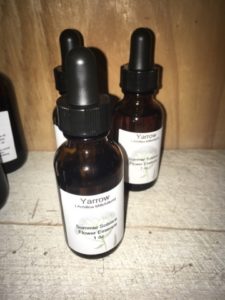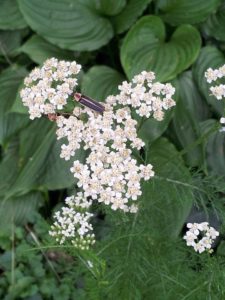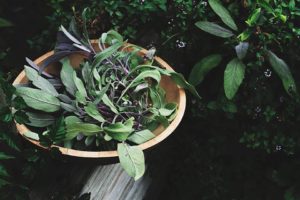I am often asked what my favorite herb is. There are so many wonderful herbs that it’s difficult to have a favorite. Most people assume it’s Thyme since the apothecary is named after it. But one always stands out to me over all the rest. It isn’t that it’s somehow more amazing than the others, it is in the personal relationship that we have with each other. That herb is Yarrow. Yarrow (Achillea millefolium), is a European native that has been naturalized in North American. The name Achillea is a nod to the great warrior Achilles who was purported to have used the herb extensively on his soldiers. Millefolium translates to thousand leaves for its finely divided wisp like leaf formation.
Yarrow has been used for both medicinal, and spiritual properties, and many indigenous peoples classify it as a sacred herb. Other names have been used such as woundwort, devil’s nettle, bloodwort, soldier’s woundwort, nosebleed, and staunchweed. Many of these common names refer to great ability as a hemostatic, astringent, and antibacterial. Pollen of Yarrow has been found in burial caves dating back 60,000. Years.[1]
The spiritual use of Yarrow also has a long history. It is used mainly for protection, divination, and love. Yarrow stalks are traditionally used to cast the I Ching, the Chinese book of prophecy. It has also been used in exorcism rites. Ruled by Venus, this powerful herb was hung over the marriage bed to guarantee love for 7 years (what happened in the years after that I can’t say). It was also hung over a newborns crib to protect it from evil. Carried as a charm or talisman Yarrow it seems has been a “go to” since ancient times. A flower essence of Yarrow can aid those who are empathic or feeling vulnerable. It has been used to cleanse the aura, and as an amplifier for other herbs.
My personal journey with Yarrow began many years ago when I first began studying herbs in earnest. She was the first herb I ever worked with medicinally, and later spiritually. Yarrow is always with me. Indeed, while shopping with a friend one day I pulled out my wallet at checkout only to have a little baggie drop out of my purse onto the floor. The looks I got as I explained that it was Yarrow, and not cannabis were priceless! So why didn’t I name the apothecary after it? Well… A Moment in Yarrow just wasn’t as catchy. Or perhaps a deeper part of me just wanted to keep her to myself, like a treasured friendship that is part of my heart, the intimacies of the relationship not meant for public display.
Green blessings,
Ali
*Disclaimer: This post is for educational purposes only and in no way constitutes medical advice. I am not a doctor, and do not, diagnose, or treat patients. Please check with your primary care physician before using herbal remedies.
A Moment in Thyme 2018©
[1] https://www.encyclopedia.com/plants-and-animals/plants/plants/yarrow



